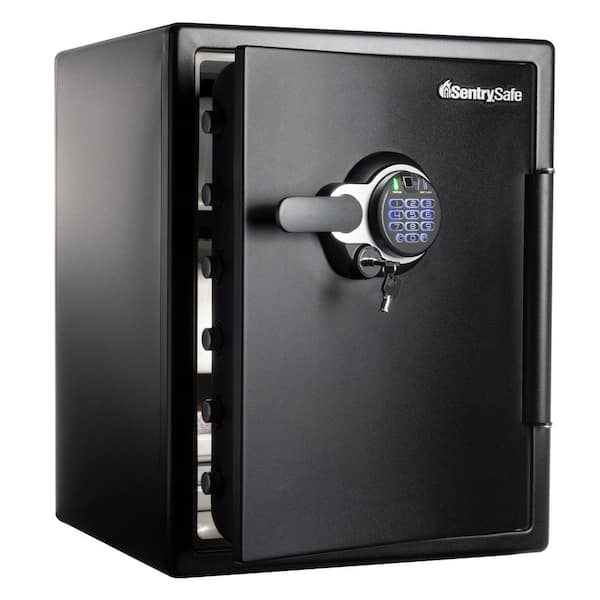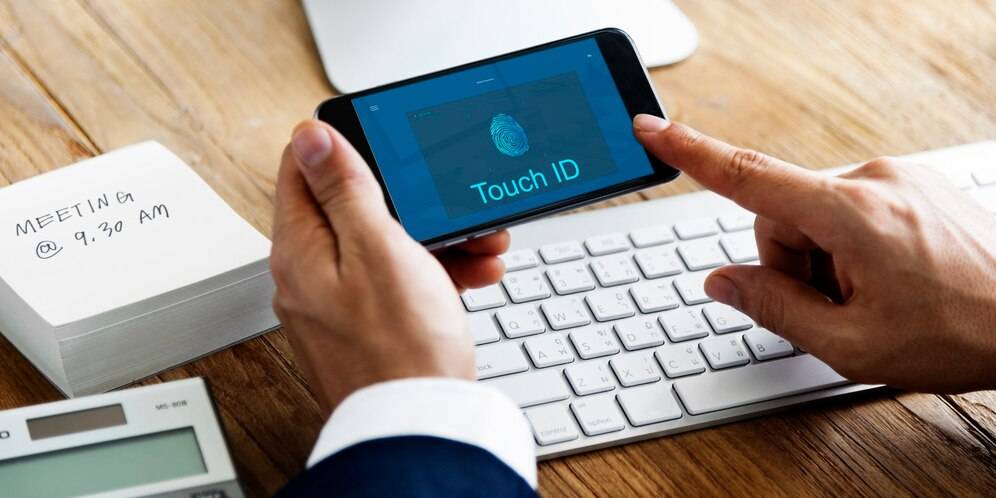Fingerprint locks are generally safe, as they provide secure access and are difficult to tamper with. However, they are not foolproof and can be circumvented with advanced techniques.
Fingerprint locks offer a high level of security by requiring a unique physical characteristic for access. While they are less susceptible to unauthorized entry compared to traditional key locks, they are still vulnerable to hacking and spoofing. Therefore, it’s important to use fingerprint locks in conjunction with other security measures to ensure maximum protection.
In the following sections, we will explore the benefits and potential risks of using fingerprint locks, as well as key considerations for enhancing their overall safety and effectiveness.

Credit: www.homedepot.com
Understanding Fingerprint Lock Technology
Fingerprint locks are an advanced form of security technology that utilizes an individual’s unique fingerprint to grant access. These innovative locks have gained popularity due to their convenience, reliability, and enhanced security features. Understanding how fingerprint locks work, their advantages, and potential limitations is essential to make an informed decision about incorporating them into your security infrastructure.
How Do Fingerprint Locks Work?
Fingerprint locks utilize biometric technology to scan and analyze an individual’s fingerprint. The process involves capturing the distinct patterns, ridges, and minutiae points present on the fingertip. These unique features are then converted into a digital template, which is stored in the lock’s database. When an individual seeks access, their fingerprint is compared to the stored template, and if a match is found, the lock grants entry. This sophisticated process ensures that only authorized users with pre-registered fingerprints can gain access to the secured area.
Advantages Of Using Fingerprint Locks
- Enhanced security: Fingerprint locks offer a high level of security as they rely on an individual’s unique biometric data, making it challenging for unauthorized individuals to replicate or bypass.
- Convenience: Users no longer need to carry keys or remember complex combinations, providing a convenient and quick way to access secured areas.
- Audit trail: Many fingerprint locks come with a feature that records access attempts, providing a detailed audit trail of when and who accessed the secured area.
- Customizable access: Fingerprint locks enable administrators to manage and restrict access for different users, adding an additional layer of control to the security system.
Limitations And Vulnerabilities Of Fingerprint Locks
While fingerprint locks offer advanced security features, they are not without limitations. Potential vulnerabilities include:
- False rejects: In certain environmental conditions or due to changes in the user’s fingerprint, the lock may fail to recognize the authorized individual, leading to false rejection.
- Cost: The initial investment for installing and maintaining fingerprint locks can be higher compared to traditional lock systems.
- Data privacy concerns: Storing biometric data raises privacy and security concerns, especially in the event of a data breach.
- Physical spoofing: Although challenging, sophisticated attackers may attempt to replicate fingerprints to gain unauthorized access to the lock.
The Reliability Of Fingerprint Recognition Systems
The reliability of fingerprint recognition systems is a crucial aspect to consider when evaluating the safety and security of utilizing such technology. As biometric authentication becomes increasingly popular in various industries, understanding the factors influencing the accuracy of fingerprint recognition, as well as potential vulnerabilities and mitigating measures, is essential to make informed decisions about its usage.
Factors Affecting The Accuracy Of Fingerprint Recognition
1. Quality of the fingerprint sensor
2. Condition of the user’s fingers
3. Environmental factors such as humidity and temperature
Vulnerabilities And Potential Risks In Fingerprint Recognition
1. Possibility of fingerprint forgery
2. Database breaches leading to unauthorized access
Mitigating Measures For Enhancing The Security Of Fingerprint Recognition Systems
1. Implementing multi-factor authentication alongside fingerprint recognition
2. Regularly updating and maintaining the fingerprint recognition software
Comparison With Traditional Lock Systems
Fingerprint lock technology has become increasingly popular in recent years, offering a convenient and innovative alternative to traditional lock systems. When comparing fingerprint locks with traditional key and combination locks, several key differences emerge, particularly in terms of security, ease of use, and the potential for future advancements.
Contrasting Fingerprint Locks With Traditional Key And Combination Locks
Traditional key and combination locks have long been the standard for securing homes, offices, and valuables. However, they are not without their drawbacks. Keys can be lost or stolen, and codes can be easily forgotten or guessed. Fingerprint locks, on the other hand, offer unparalleled security through biometric recognition, making unauthorized access virtually impossible.
Moreover, fingerprint locks eliminate the need for physical keys or memorizing combinations, providing a hassle-free and efficient means of entry. This convenience can be especially beneficial in scenarios where multiple people require access, such as in a shared workspace or family home.
Security Implications Of Switching To Fingerprint Locks
Switching to fingerprint locks presents a significant enhancement in security, as biometric authentication ensures that only authorized individuals can gain access. The unique ridges and patterns of a person’s fingerprint make it virtually impossible to replicate, making fingerprint locks a highly secure option for safeguarding valuables and property.
Furthermore, fingerprint lock technology offers the added benefit of real-time access control, allowing for immediate revocation of access privileges without the need to physically rekey or change codes. This level of control enhances security measures and minimizes the risk of unauthorized entry.
The Future Of Fingerprint Lock Technology And Its Potential Advancements
As technology continues to evolve, the future of fingerprint lock systems holds great promise for even more advanced security features and integration with smart home and office automation. Advances in biometric recognition algorithms and sensor technology are likely to result in enhanced accuracy, speed, and reliability in fingerprint lock systems.
Moreover, the integration of fingerprint lock technology with smart home devices and security systems is anticipated to provide a seamless and interconnected approach to safeguarding property and assets. This convergence will undoubtedly redefine the landscape of security solutions, offering unparalleled protection and convenience.
Legal And Ethical Considerations
When considering the use of fingerprint locks, it is essential to delve into the legal and ethical considerations surrounding this biometric security measure. Understanding the privacy concerns, legal implications, and ethical considerations is crucial in evaluating the safety and efficacy of fingerprint locks.
Privacy Concerns Associated With Storing Fingerprint Data
The storage of fingerprint data raises significant privacy concerns. Biometric data is unique and personal, and its storage must adhere to strict privacy regulations to protect individuals’ rights. Unauthorized access, data breaches, and misuse of stored biometric data are potential risks that require careful consideration when implementing fingerprint lock systems.
Legal Implications Of Using Fingerprint Locks In Various Jurisdictions
The legal implications of utilizing fingerprint locks vary across different jurisdictions. It is imperative for businesses and individuals to be aware of the regulatory requirements and legal frameworks governing the collection, storage, and use of biometric data. Compliance with data protection laws such as the GDPR, CCPA, and other relevant regulations is essential to ensure the lawful use of fingerprint locks.
Ethical Considerations Surrounding The Use Of Biometric Security Measures
From an ethical standpoint, the use of biometric security measures, including fingerprint locks, raises questions about consent, transparency, and accountability. The ethical framework for biometric data usage should prioritize informed consent and clear explanations of data usage to mitigate any potential concerns about privacy and autonomy. Furthermore, ensuring fair and non-discriminatory usage of biometric technology is essential in upholding ethical standards.
Maximizing Security And User Experience
Fingerprint locks have gained popularity due to the convenience they offer and the perception of high-security levels. However, to ensure that fingerprint lock systems deliver on both security and user experience, certain best practices, user education, and balancing of convenience and security are essential.
Best Practices For Securing And Maintaining Fingerprint Lock Systems
Implementing best practices for securing and maintaining fingerprint lock systems is essential for maximizing security. This involves:
- Regularly updating the firmware and software of the fingerprint lock to ensure it is equipped with the latest security features.
- Regularly cleaning the fingerprint sensor to remove any dirt, dust, or smudges that could affect its performance.
- Conducting periodic security audits to identify and address any vulnerabilities in the system.
- Using strong, unique passcodes as backup security measures in case of fingerprint recognition failure or compromise.
User Education And Awareness For Optimal Utilization Of Fingerprint Locks
Optimal utilization of fingerprint locks requires user education and awareness. This includes:
- Guidance on the proper way to enroll and verify fingerprints to ensure accurate recognition.
- Training users on the need to keep their fingers clean and dry when using the fingerprint lock to avoid false rejections.
- Creating awareness about the limitations of fingerprint recognition technology and the importance of having alternative access methods in place.
- Educating users about the potential security risks associated with sharing access to the fingerprint lock with unauthorized individuals.
Balancing Convenience And Security In The Adoption Of Fingerprint Lock Technology
Adopting fingerprint lock technology requires a careful balance of convenience and security. This can be achieved by:
- Integrating multi-factor authentication to enhance security without compromising convenience.
- Providing user-friendly interfaces and intuitive enrollment processes to enhance the user experience.
- Regularly updating the fingerprint lock system to adapt to evolving security threats while maintaining ease of use.
- Creating clear user guidelines to ensure proper handling of the fingerprint lock while maintaining security standards.
Frequently Asked Questions On How Safe Is Fingerprint Lock?
Is It Safe To Lock Phone With Fingerprint?
Yes, it is safe to lock your phone with a fingerprint. Fingerprint authentication provides reliable security for your device. It is convenient and offers a high level of protection against unauthorized access.
Is Fingerprint Lock More Secure Than Password?
Yes, fingerprint lock is more secure than a password due to its unique biometric authentication.
Are Fingerprints Really Secure?
Yes, fingerprints are a secure form of identification due to their uniqueness and complexity. They are difficult to replicate and provide a reliable means of authentication for various purposes.
How Reliable Are Fingerprint Security?
Fingerprint security is highly reliable due to its unique and individual nature. It provides a secure and efficient way to access devices and information. Additionally, fingerprints are difficult to replicate, making them a strong security measure.
Conclusion
In sum, fingerprint locks offer high security and convenience for users. However, it’s important to consider potential risks such as device malfunction or exploitation. By adopting best practices and staying updated with advancements in biometric technology, individuals can effectively safeguard their homes and belongings.
As technology continues to evolve, it’s essential to remain aware of both the benefits and vulnerabilities of fingerprint lock systems.
